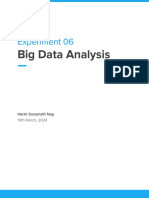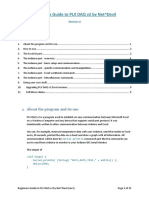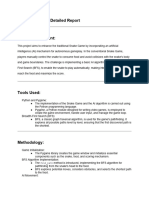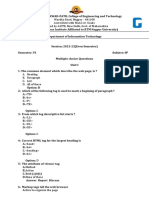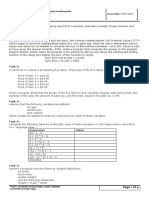0% found this document useful (0 votes)
35 views42 pagesBig Data Unit 5 (Easy Notes) Edushine Classes
The document provides an overview of the Hadoop ecosystem, focusing on tools like Pig, Hive, and HBase. It explains Pig as a data flow language for processing big data with a simpler syntax than Java MapReduce, and Hive as a data warehouse tool that uses HiveQL for managing large datasets. Additionally, it describes HBase as a NoSQL database designed for real-time read and write operations on large data sets, highlighting its flexible schema and various client options for interaction.
Uploaded by
Yashi GuptaCopyright
© © All Rights Reserved
We take content rights seriously. If you suspect this is your content, claim it here.
Available Formats
Download as PDF, TXT or read online on Scribd
0% found this document useful (0 votes)
35 views42 pagesBig Data Unit 5 (Easy Notes) Edushine Classes
The document provides an overview of the Hadoop ecosystem, focusing on tools like Pig, Hive, and HBase. It explains Pig as a data flow language for processing big data with a simpler syntax than Java MapReduce, and Hive as a data warehouse tool that uses HiveQL for managing large datasets. Additionally, it describes HBase as a NoSQL database designed for real-time read and write operations on large data sets, highlighting its flexible schema and various client options for interaction.
Uploaded by
Yashi GuptaCopyright
© © All Rights Reserved
We take content rights seriously. If you suspect this is your content, claim it here.
Available Formats
Download as PDF, TXT or read online on Scribd
/ 42









